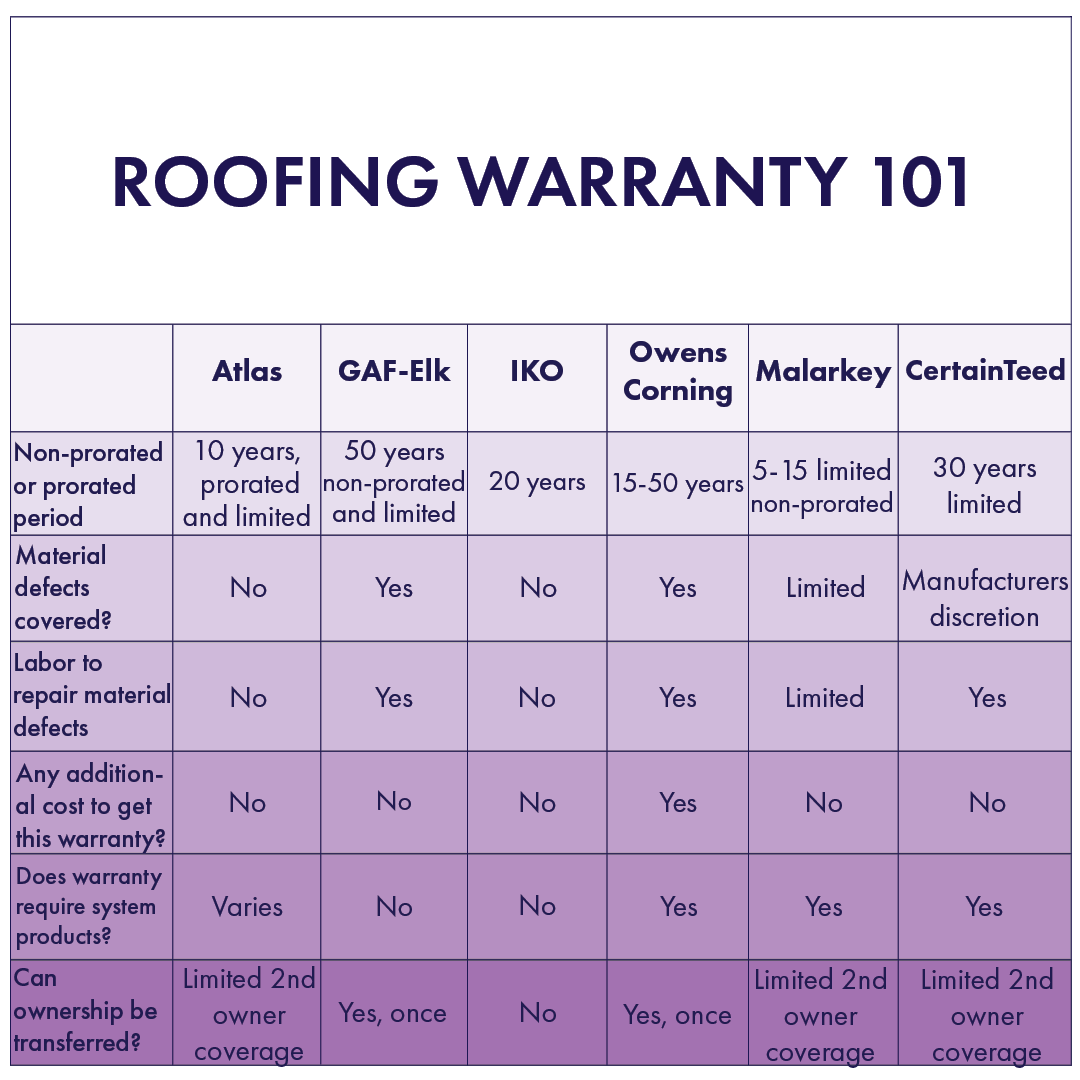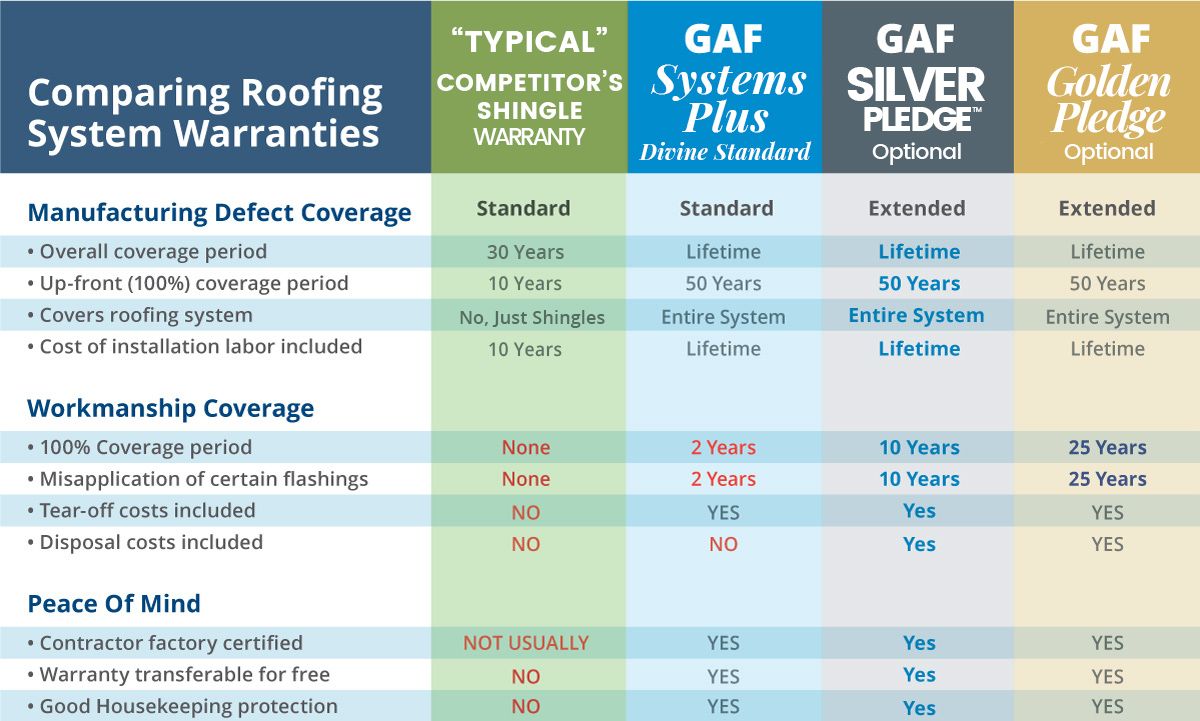Exploring Roofing Warranty Options: A Comprehensive Guide
When it comes to protecting your roof, understanding your warranty options is crucial. From manufacturer guarantees to contractor promises, each type offers different coverage and limitations. Let's delve into the world of roofing warranties to ensure you make the best choice for your home.
In this guide, we will break down the types of warranties available, discuss their length and coverage, explore the warranty claim process, and highlight important details often overlooked in the fine print.
Types of Roofing Warranty Options

When it comes to roofing warranty options, there are typically two main types available in the market: manufacturer warranties and contractor warranties. Both types offer coverage for your roof, but there are key differences between them.
Manufacturer Warranties
Manufacturer warranties are provided by the company that produces the roofing materials. These warranties typically cover defects in the materials themselves, such as shingle defects or premature deterioration. Manufacturer warranties can vary in length and coverage, so it's important to carefully review the terms and conditions.
- Manufacturer warranties are usually transferable if you sell your home.
- Coverage may include replacement materials, but not the cost of labor for installation.
- Limitations may include specific maintenance requirements to keep the warranty valid.
Contractor Warranties
Contractor warranties, on the other hand, are provided by the roofing contractor who installs the roof. These warranties typically cover the workmanship and installation of the roof, ensuring that it was done correctly. Contractor warranties can vary in length and coverage as well.
- Contractor warranties may cover labor costs for repairs if there are issues with the installation.
- Coverage may not extend to damage caused by natural disasters or improper maintenance.
- Limitations may include specific requirements for regular inspections or maintenance to keep the warranty valid.
When considering roofing warranty options, it's important to understand the differences between manufacturer warranties and contractor warranties, as well as the coverage and limitations of each type. This knowledge can help you make an informed decision when selecting the best warranty for your roof.
Length and Coverage of Warranties
When it comes to roofing warranties, the length and coverage can vary significantly depending on the company and the type of warranty offered. Understanding these factors is crucial for homeowners looking to protect their investment in a new roof.Extended warranty options are often available for those looking for additional coverage beyond the standard warranty.
These extended warranties can provide benefits such as coverage for labor costs, materials, and even transferability if you decide to sell your home.
Duration of Warranties
Typically, roofing warranties can range anywhere from 5 years to 50 years, with most standard warranties falling between 15 to 25 years. It's important to carefully review the terms and conditions of the warranty to understand what exactly is covered and for how long.
Factors Affecting Coverage
Several factors can affect the coverage provided by roofing warranties, including the type of roofing material used, the installation process, and regular maintenance. Poor installation or lack of maintenance may void the warranty, so it's essential to follow the manufacturer's guidelines to ensure coverage in case of any issues.
Warranty Claim Process

When it comes to filing a warranty claim for roofing issues, there are specific steps involved to ensure a smooth process and resolution. It is essential to understand what documentation is required to support your claim and how the inspection process works when claiming under a roofing warranty.
Required Documentation for Warranty Claim
- Proof of purchase or installation of the roof by a certified professional.
- Copies of the warranty documents provided by the roofing manufacturer.
- Detailed description of the issue or damage experienced.
- Any maintenance records or inspections conducted on the roof.
Inspection Process for Roofing Warranty Claim
When filing a warranty claim for roofing issues, an inspection process is typically initiated to assess the extent of the problem and determine if it falls under the coverage of the warranty. Here is how the inspection process generally works:
- The homeowner contacts the roofing manufacturer or installer to report the issue and request a warranty claim.
- A qualified inspector is assigned to visit the property and assess the roofing problem in detail.
- The inspector will document findings, take photographs, and prepare a report outlining the issue and whether it is covered under the warranty.
- Based on the inspection report, the roofing manufacturer or installer will determine if the claim is valid and proceed with necessary repairs or replacements.
Transferability and Fine Print
When it comes to roofing warranties, understanding the transferability and fine print is crucial for homeowners. Let's dive into these important aspects to ensure you make informed decisions when dealing with your roof.
Transferability of Roofing Warranties
Most roofing warranties are transferable when selling a home, but it's essential to check the specific terms and conditions Artikeld by the manufacturer. Some warranties may require a transfer fee or have limitations on the number of times the warranty can be transferred.
Make sure to communicate with the manufacturer or contractor to facilitate a smooth transfer process.
Fine Print Details in Roofing Warranties
- Pay attention to the exclusions listed in the warranty, as these dictate what is not covered. Common exclusions may include natural disasters, improper installation, and lack of maintenance.
- Understand the warranty's limitations, such as the duration of coverage, types of damage included, and any required maintenance to keep the warranty valid.
- Look for clauses related to the warranty's voiding conditions, which may include failure to follow maintenance guidelines, using unauthorized contractors, or making modifications without approval.
- Check for details on how warranty claims are processed, including the documentation required, timelines for filing a claim, and the responsibilities of the homeowner in case of damage.
Tips for Reviewing Warranty Terms and Conditions
- Read the warranty thoroughly and ask for clarification on any unclear terms or conditions.
- Compare warranties from different manufacturers to find the best coverage for your specific needs.
- Consult with a roofing professional or legal advisor if you have any doubts about the warranty's implications.
- Keep all warranty documents in a safe place and maintain records of any maintenance or repairs related to your roof.
Last Recap

In conclusion, being informed about roofing warranty options empowers homeowners to make informed decisions about their roof's protection. Remember to carefully review the terms and conditions to ensure you get the most out of your warranty.